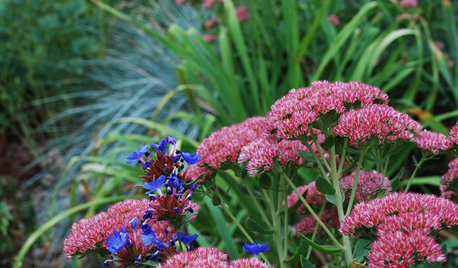Help! Lawn expert advice needed on fungus in October
fpmom
9 years ago
Related Stories

HEALTHY HOMEHow to Childproof Your Home: Expert Advice
Safety strategies, Part 1: Get the lowdown from the pros on which areas of the home need locks, lids, gates and more
Full Story
WINTER GARDENINGPruning Secrets for Exquisite Roses
Encourage gorgeous blooms year after year with this time-tested advice on how to prune your rosebush in winter for health and shape
Full Story
FARM YOUR YARDHow to Grow Vegetables in Containers
Get glorious vegetables and fruits on your patio with a pro’s guidance — including his personal recipe for potting mix
Full Story
PETS6 Ways to Help Your Dog and Landscape Play Nicely Together
Keep your prized plantings intact and your dog happy too, with this wisdom from an expert gardener and dog guardian
Full Story
GARDENING GUIDESFall Is Calling: What to Do in Your October Garden
Get a jump on winter prep or just sit back and watch the leaves fall. The beauty of an autumn garden is in all the choices you have
Full Story
MONTHLY HOME CHECKLISTSOctober Checklist for a Smooth-Running Home
You're due for some winterizing, like clearing rain gutters and stowing swimsuits — but leave time for a fun project
Full Story
GARDENING GUIDESSouthwest Gardener's October Checklist
Softer light and milder weather make desert gardens a real joy this month, but watch the water and don't forget to plan
Full Story
GARDENING GUIDESHow to Plant a New Lawn From Sod
Take the quick-start route to turf with sod; these installation guidelines will help ensure a healthy and long-lasting lawn
Full Story
SELLING YOUR HOUSEHelp for Selling Your Home Faster — and Maybe for More
Prep your home properly before you put it on the market. Learn what tasks are worth the money and the best pros for the jobs
Full Story








dchall_san_antonio
fpmomOriginal Author
Related Professionals
Buford Landscape Contractors · Andover Landscape Contractors · Hendersonville Landscape Contractors · Lorain Landscape Contractors · Manhattan Landscape Contractors · Mashpee Landscape Contractors · Monterey Landscape Contractors · Red Oak Landscape Contractors · Rockland Landscape Contractors · Rockwall Landscape Contractors · Severna Park Landscape Contractors · South Lyon Landscape Contractors · Reisterstown Landscape Contractors · Apple Valley Swimming Pool Builders · Seabrook Swimming Pool Buildersmorpheuspa (6B/7A, E. PA)
fpmomOriginal Author
morpheuspa (6B/7A, E. PA)
dchall_san_antonio
claga
fpmomOriginal Author
claga
fpmomOriginal Author
morpheuspa (6B/7A, E. PA)
fpmomOriginal Author
claga
fpmomOriginal Author
fpmomOriginal Author
claga
morpheuspa (6B/7A, E. PA)
fpmomOriginal Author
morpheuspa (6B/7A, E. PA)
claga
fpmomOriginal Author
morpheuspa (6B/7A, E. PA)
fpmomOriginal Author
fpmomOriginal Author
morpheuspa (6B/7A, E. PA)
fpmomOriginal Author
zzackey
fpmomOriginal Author
morpheuspa (6B/7A, E. PA)
morpheuspa (6B/7A, E. PA)
fpmomOriginal Author
claga
fpmomOriginal Author
claga
fpmomOriginal Author